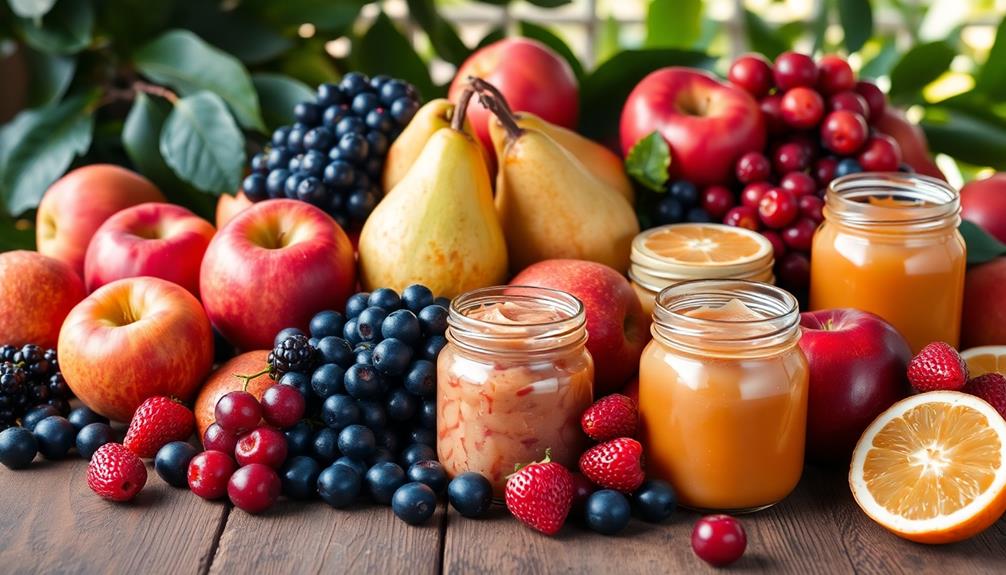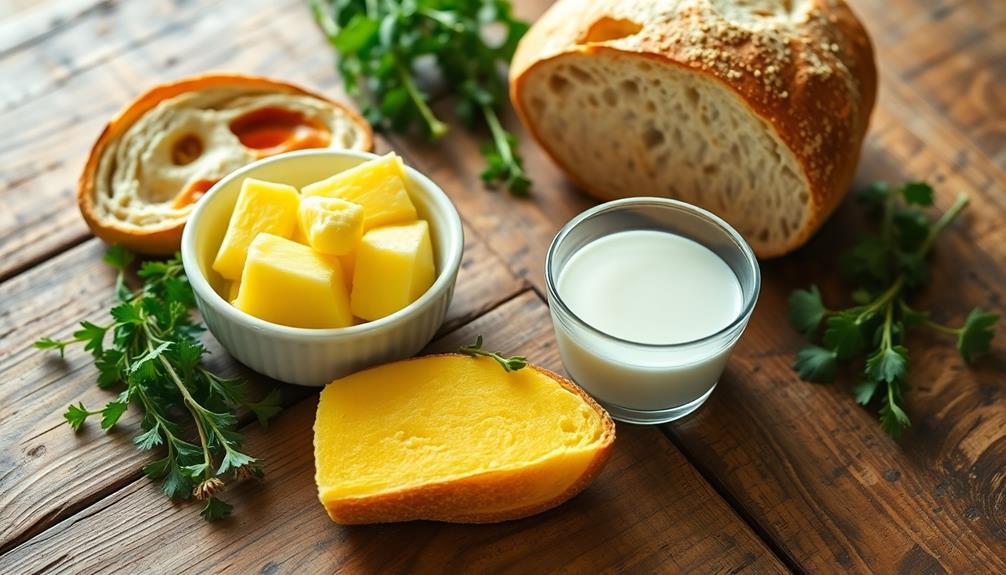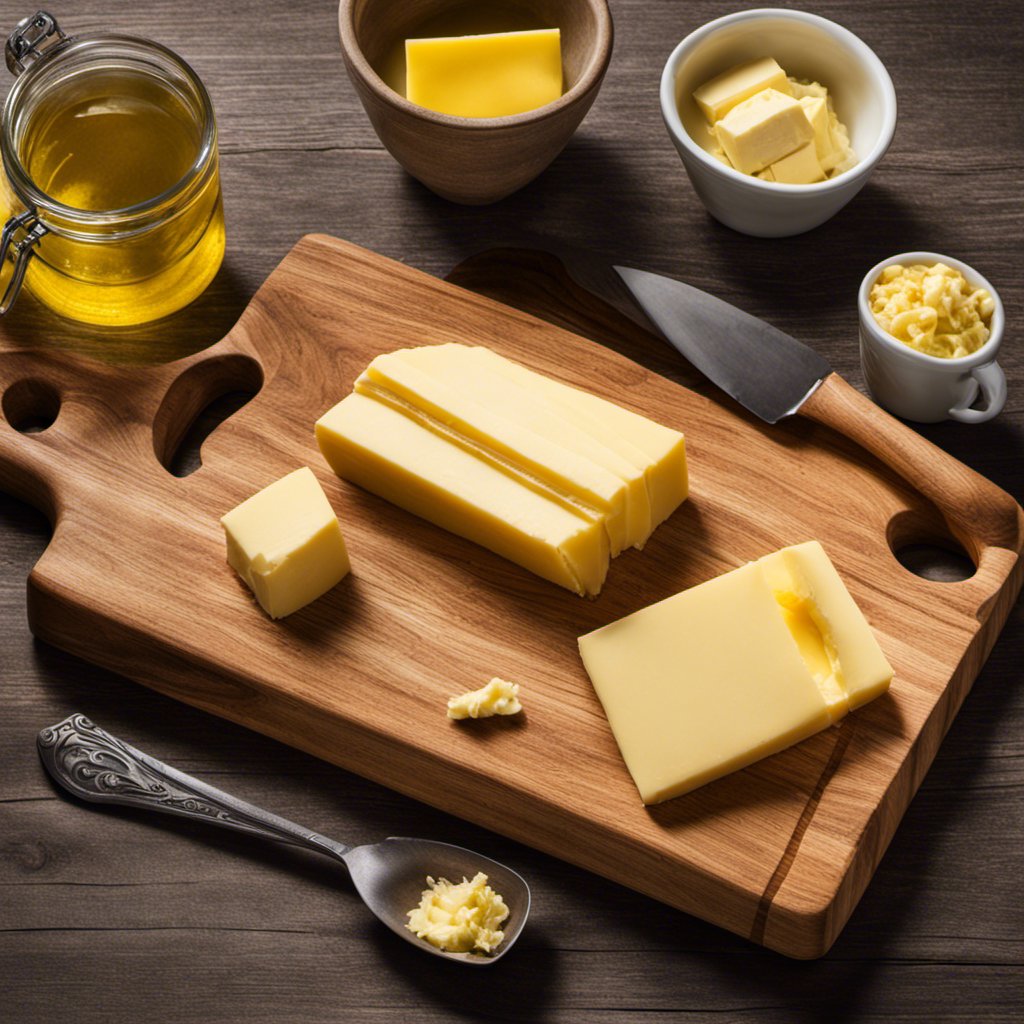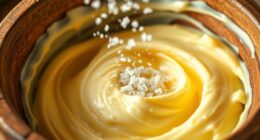You can enjoy delicious sugar-free fruit butters that cater to your dietary needs. Use fresh or frozen fruits like apples or berries as your base. Sweeten with alternatives like stevia or monk fruit, and add a splash of lemon juice for balance. Try an easy apple butter by cooking six cups of chopped apples with spices and some unsweetened juice. For a berry delight, simmer two cups of berries until soft, blend, and thicken. These fruit butters not only taste great—use them on toast or in oatmeal. Keep exploring for more unique recipes and uses!
Key Takeaways
- Sugar-free fruit butters offer rich flavors without added sugars, making them suitable for diabetics managing sugar intake.
- Use fresh or frozen fruits like apples and berries as the base for delicious fruit butters packed with vitamins and antioxidants.
- Sweetener alternatives such as stevia or monk fruit can replace sugar, ensuring a diabetic-friendly treat.
- Adding spices like cinnamon can enhance flavor without raising sugar levels, making the fruit butter more enjoyable.
- Fruit butters can be used in various ways, such as spreads, baking substitutes, or oatmeal enhancers, providing versatility in a diabetic diet.
Benefits of Sugar-Free Fruit Butters

Sugar-free fruit butters offer a delicious and healthier alternative to traditional spreads, making them a fantastic addition to your pantry. You'll enjoy the rich flavors of fruit without the guilt of added sugars. These spreads can help you manage your sugar intake while satisfying your cravings for something sweet.
Using sugar-free fruit butters means you're not just cutting calories; you're also benefiting from the natural vitamins and minerals found in the fruits themselves. This means you get antioxidants and fiber that can support your overall health. You can spread them on toast, mix them into yogurt, or use them as a filling for pastries, giving you endless options for delicious meals and snacks.
Additionally, sugar-free fruit butters often contain fewer preservatives than commercial products. This means you'll have a more wholesome choice that aligns with your dietary preferences. By making your own or choosing high-quality options, you can control the ingredients.
Ultimately, incorporating sugar-free fruit butters into your diet can help you enjoy sweet flavors while supporting a healthier lifestyle, making them a smart choice for anyone looking to reduce sugar consumption.
Essential Ingredients You'll Need

To make delicious fruit butters, you'll need just a handful of essential ingredients that elevate the natural flavors of the fruit. First up is your choice of fresh or frozen fruit. Apples, pears, and berries work wonderfully, so pick what you enjoy most.
Next, you'll need a sweetener alternative. Stevia and monk fruit sweetener are great options that won't spike your blood sugar. You'll also want to include some acid, like lemon juice, to balance the sweetness and enhance the fruit's flavors.
Spices are optional but can add depth. Think cinnamon, nutmeg, or vanilla extract. Finally, a pinch of salt can bring all the flavors together.
Here's a quick reference table for your essential ingredients:
| Ingredient | Purpose | Examples |
|---|---|---|
| Fresh/Frozen Fruit | Base flavor | Apples, Berries, Pears |
| Sweetener | Sugar substitute | Stevia, Monk Fruit |
| Acid | Flavor enhancer | Lemon Juice |
| Spices | Flavor depth | Cinnamon, Nutmeg |
| Salt | Flavor balance | Sea Salt |
With these ingredients, you're all set to create your own sugar-free fruit butters!
Easy Apple Butter Recipe
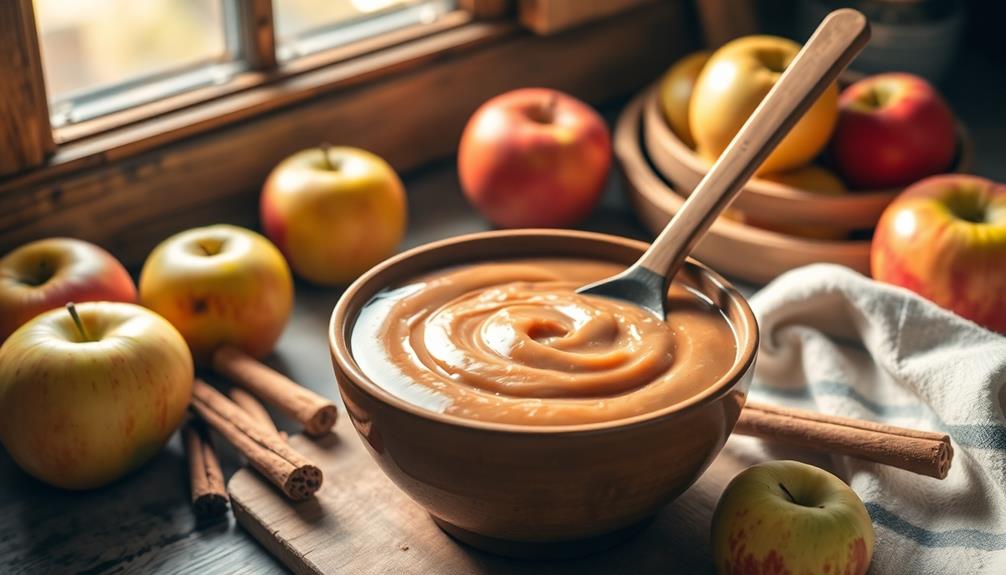
Making your own apple butter at home is easier than you might think, and it's a fantastic way to enjoy the rich flavors of apples without added sugar. To get started, gather about six cups of peeled, cored, and chopped apples, preferably a mix of tart and sweet varieties for depth of flavor.
The creamy texture of butter can enhance the spreadability of your apple butter, making it even more enjoyable. Next, toss the apples into a pot and add one teaspoon of cinnamon, a quarter teaspoon of nutmeg, and a pinch of allspice for those warm, aromatic notes butter enhances flavor.
Pour in a cup of unsweetened apple juice or cider to help the apples break down as they cook. Bring the mixture to a boil, then reduce the heat and let it simmer for about 30-40 minutes, stirring occasionally until the apples are soft.
Once they're tender, use an immersion blender or a food processor to puree the mixture until smooth. Return the apple butter to the pot and cook it down until it reaches your desired thickness, typically another 20-30 minutes.
Once done, cool it down, and store it in jars. This apple butter is perfect for spreading on toast or adding to yogurt, providing a delightful, sugar-free treat!
Delicious Berry Fruit Butter Recipe
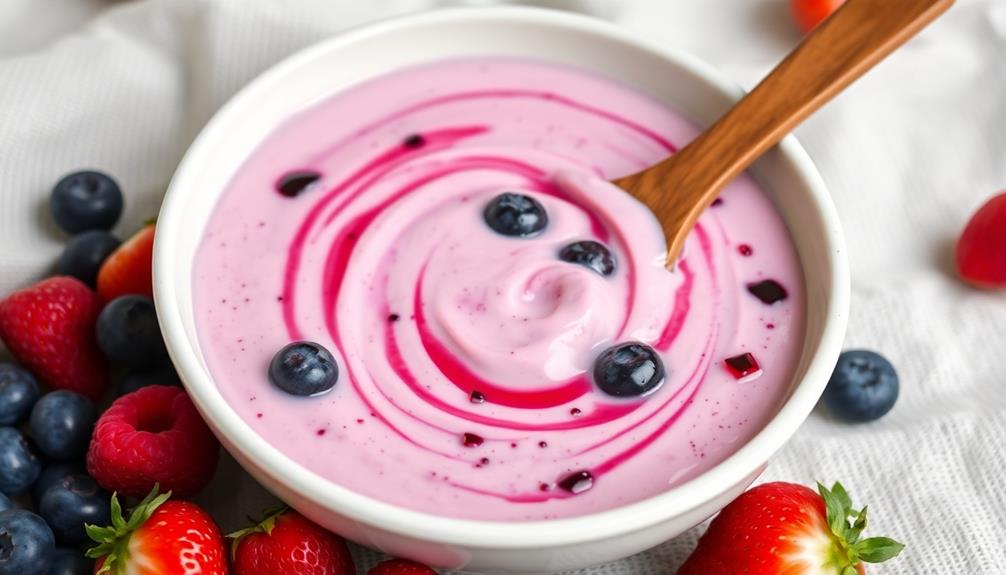
While berry fruit butter may sound indulgent, it's surprisingly simple to whip up a batch at home.
This delightful spread isn't only sugar-free but also bursting with flavor. You can enjoy it on toast, pancakes, or as a dip for fresh fruit. Additionally, pairing it with a cup of herbal tea for fibromyalgia can enhance your overall well-being.
Here's how to make it:
- Choose Your Berries: Select a mix of your favorites, like strawberries, blueberries, raspberries, or blackberries. Fresh or frozen works well!
- Cook the Berries: In a saucepan, combine 2 cups of berries with a splash of water. Heat over medium until the berries soften and break down, about 10 minutes.
- Blend and Strain: Use an immersion blender or standard blender to puree the mixture until smooth. For a silkier texture, strain it through a fine mesh sieve.
- Thicken and Flavor: Return the puree to the saucepan, add a pinch of salt and your favorite sugar substitute. Simmer until it thickens to your desired consistency, about 15 minutes.
Let it cool before storing it in a jar. Enjoy this versatile berry fruit butter guilt-free!
Creative Uses for Fruit Butters
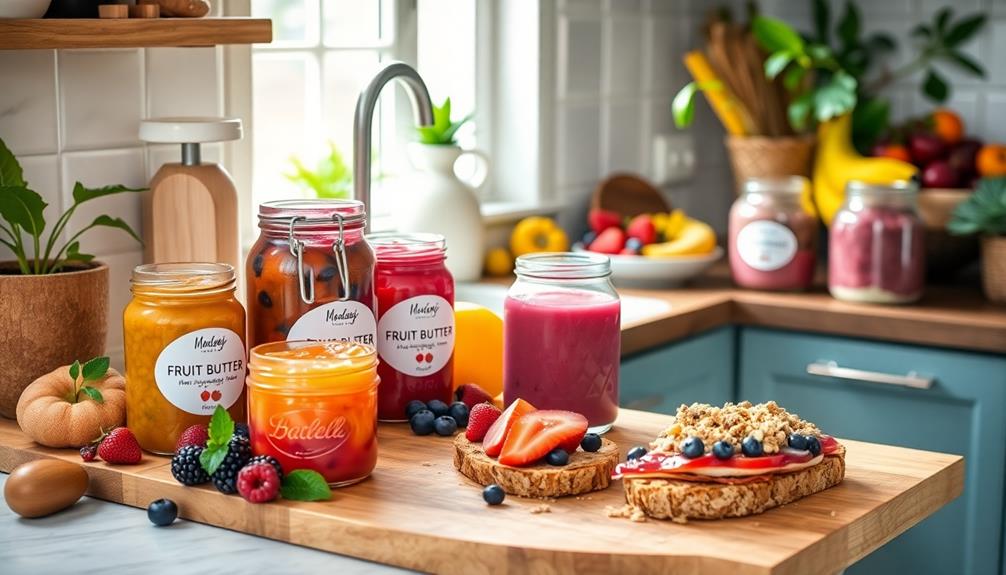
Often underestimated, fruit butters can elevate your culinary creations in delightful ways. You can use them as a spread on toast or muffins, transforming a simple breakfast into a gourmet experience. Just a thin layer adds flavor without the sugar, making it perfect for a diabetic-friendly diet.
Consider pairing your fruit butter with a warm slice of Easy Tomato Focaccia for a deliciously unique twist.
Incorporating fruit butters into your baking is another fantastic option. Swap out traditional fats in recipes like cookies or cakes for fruit butter to infuse moisture and sweetness. It works wonders in oatmeal too—mix a spoonful into your morning bowl for an instant flavor boost.
You can also use fruit butters as a base for salad dressings. Combine it with vinegar and olive oil for a sweet-tart dressing that'll make your greens sing.
If you're feeling adventurous, try dolloping some fruit butter on grilled meats or fish; it creates a lovely glaze that pairs beautifully with savory dishes.
Frequently Asked Questions
Can I Use Frozen Fruit for Making Fruit Butter?
Yes, you can use frozen fruit for making fruit butter. Just thaw it first, then blend it with your choice of sweetener and spices. It'll create a delicious and smooth spread perfect for your needs.
How Long Can Sugar-Free Fruit Butter Be Stored?
Think of your sugar-free fruit butter as a treasure. You can store it in the fridge for about two weeks or freeze it for up to six months, keeping that deliciousness preserved for future enjoyment.
Are There Any Preservatives in Homemade Fruit Butters?
When you make homemade fruit butters, they typically don't contain preservatives unless you add them. You can enjoy the fresh taste, but remember to store your creations properly to maintain their quality and safety.
Can I Substitute Different Fruits in the Recipes?
Did you know that over 90% of people enjoy experimenting with flavors? You can definitely substitute different fruits in the recipes. Just remember to adjust the sweetness and cooking times to suit each fruit's unique characteristics.
What Kitchen Tools Are Essential for Making Fruit Butter?
To make fruit butter, you'll need a good quality blender or food processor for blending, a sturdy saucepan for cooking, and a wooden spoon for stirring. Don't forget canning jars for storage when you're done!
Conclusion
Incorporating sugar-free fruit butters into your diet is like adding a splash of sunshine to your meals. These delightful spreads not only satisfy your sweet cravings but also embrace your health goals. So, whether you're slathering apple butter on whole-grain toast or swirling berry butter into your morning oatmeal, you're treating yourself to something special. Immerse yourself in these recipes, release your creativity, and let each bite remind you that deliciousness and health can dance hand in hand!
